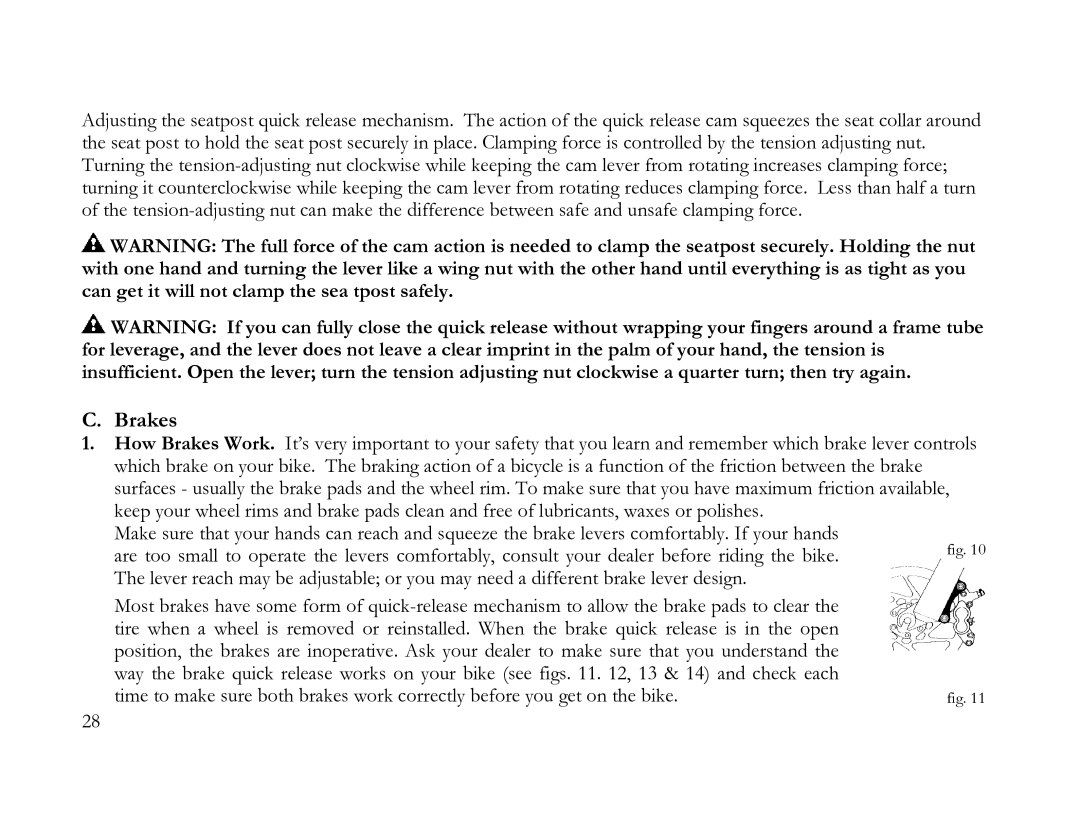
Adjusting the seatpost quick release mechanism. The action of the quick release cam squeezes the seat collar around the seat post to hold the seat post securely in place. Clamping force is controlled by the tension adjusting nut. Turning the
![]() WARNING: The full force of the cam action is needed to clamp the seatpost securely. Holding the nut with one hand and turning the lever like a wing nut with the other hand until everything is as tight as you can get it will not clamp the sea tpost safely.
WARNING: The full force of the cam action is needed to clamp the seatpost securely. Holding the nut with one hand and turning the lever like a wing nut with the other hand until everything is as tight as you can get it will not clamp the sea tpost safely.
![]() WARNING: If you can fully close the quick release without wrapping your fingers around a frame tube for leverage, and the lever does not leave a clear imprint in the palm of your hand, the tension is insufficient. Open the lever; turn the tension adjusting nut clockwise a quarter turn; then try again.
WARNING: If you can fully close the quick release without wrapping your fingers around a frame tube for leverage, and the lever does not leave a clear imprint in the palm of your hand, the tension is insufficient. Open the lever; turn the tension adjusting nut clockwise a quarter turn; then try again.
C. Brakes
1.How Brakes Work. It’s very important to your safety that you learn and remember which brake lever controls which brake on your bike. The braking action of a bicycle is a function of the friction between the brake surfaces - usually the brake pads and the wheel rim. To make sure that you have maximum friction available, keep your wheel rims and brake pads clean and free of lubricants, waxes or polishes.
Make sure that your hands can reach and squeeze the brake levers comfortably. If your hands are too small to operate the levers comfortably, consult your dealer before riding the bike. The lever reach may be adjustable; or you may need a different brake lever design.
Most brakes have some form of
28
